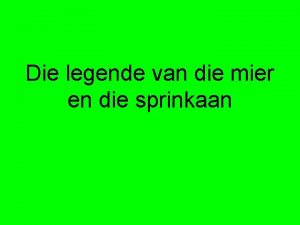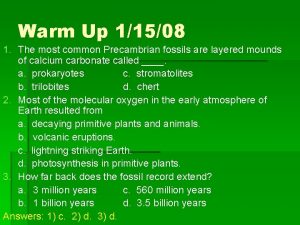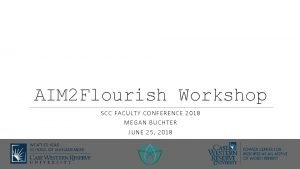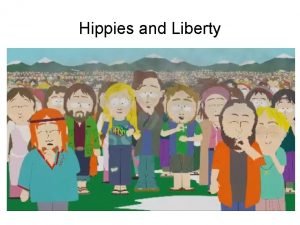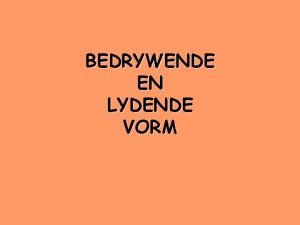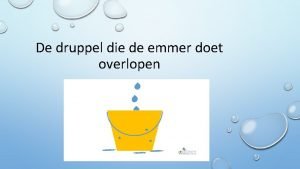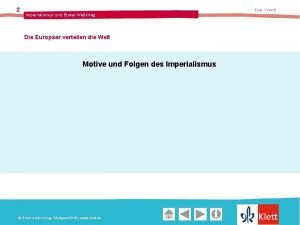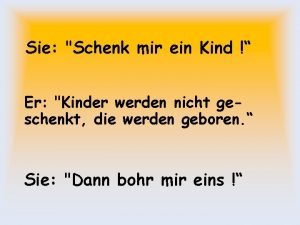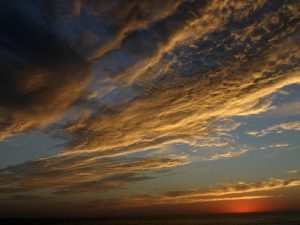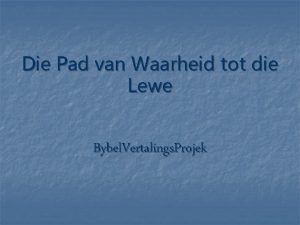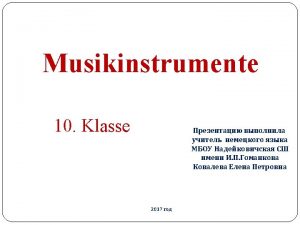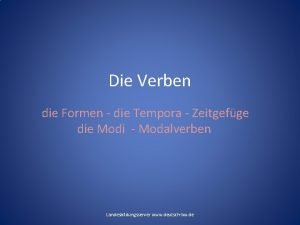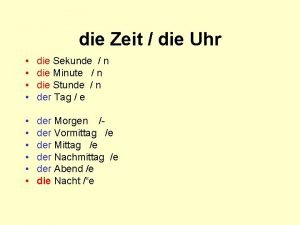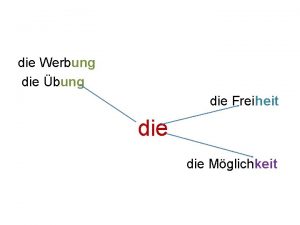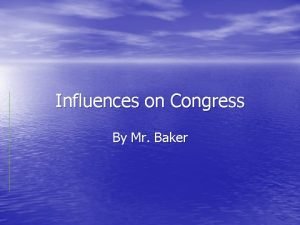Populations What influences how populations flourish or die


















- Slides: 18

Populations What influences how populations flourish or die out?

Biotic Potential The maximum number of offspring that a species could reproduce in a life time, if resources were unlimited. Biotic Potential is determined by: • 1. Birth potential: max # of offspring per birth • 2. Capacity for survival: # of offspring that reach reproductive age • 3. Procreation: # of times a species reproduces each year • 4. Length of reproductive life: # of years species can reproduce

Limiting Factors A limiting factor is any factor that places an upper limit on the size of a population Limiting factors can be biotic or abiotic Human influences often act as limiting factors What are the limiting factors that might affect a population of penguins? How about a suburban human population?

Tolerance Range The abiotic conditions within which a species can survive Species can be successful over a range of abiotic conditions A population will become stressed and die out if conditions exceed their tolerance limits See Figure 1, Nelson, p. 52

Tolerance Range Use Figure 2, p. 53 (Nelson) to fill in the following chart Cacti Waterlillies Bunchberries - water levels minimize exposure of roots to air -full exposure to sun - shade abiotic conditions that keep species within tolerance range - long periods of Drought -full exposure to sun abiotic conditions that put species outside of tolerance range - long - if water level - too much light periods of drops rain (roots exposing roots to cannot air survive -low light availability damp conditions -low light availability

Carrying Capacity The population remains within the limits that the environment can support This is the largest population size of a species that an ecosystem can support or sustain There are several factors that can influence the Carrying Capacity of a species: food (think also food chains, webs) water shelter space climate susceptibility to disease predation competition for many of the above

Carrying Capacity Carrying capacity can be altered through natural or human Think-Pair-Share: Consider a species we have discussed or you know about from your previous personal experience. How was the carrying capacity of this species affected by either a natural or human action? (can be positive or negative) Example 1: Irrigation systems in African deserts increases the carrying capacity of organisms living in a desert ecosystem (increased water availability) Example 2: the removal of wolves by human hunters will increase the carrying capacity of moose in this ecosystem (more space, less predators) Example 3: clear-cutting trees will decrease the carrying capacity of certain bird species that rely on these trees for habitat and to maintain their nests

Population Density Is the number of organisms living in a given space Use a diagram to show a high population density vs. low population density and provide a specific real example in nature

Population Densityindependent factors that do not depend on the population size weather (storms, cold, drought, floods, early freezing, heavy snow) forest fires comets affect population size can lead to species aggression and/or panic can lead to extinction can help populations flourish density-independent diseases (DDT poisoning) environmental pollution Density-dependent factors that do depend on the population size food availability space (shelter, territories denning sites, nest cavities density-dependent diseases (rabies, SARS) competition (intraspecific. vs. interspecific)

Intraspecific vs. Interspecific Intraspecific: when two organisms from the same species are after the same resources or food THINK/PAIR/SHARE: Give a specific example of intraspecific competition. Interspecific competition: when two organisms from different species are after the same resources or food THINK/PAIR/SHARE: Give a specific example of interspecific competition.

Reaching the Carrying Capacity In the 1800 s, the fur trade led to a Drastic decline in the fur seal population In 1911 a treaty was signed to protect the fur seal population Exponential Growth Carrying capacity reached (population size has reached equilibrium or is in balance)

Humans and Carrying Capacity What actions have humans taken to increase the carrying capacity of our species? - Early on: using fire, making simple tools/weapons - Improvements in public health, education, agriculture, medicine, technology - Exploiting huge amounts of energy and resources to run complex, modern societies What paths might the curve take after this century? Which path do you think is most likely? Why?

What next?

Invasive species An invasive species is one that can be either native and non-native that heavily colonize a particular habitat. Natural, wild species can be threatened with extinction.

The good ones Asian Oysters- are better at filtering out water pollutants than native oysters. Garlic Mustardintroduced as a means of erosion control

Characteristics of Good Invaders High rate of reproduction (short generation time) Long-lived High dispersal rates (produces a lot of seeds) Single-parent reproduction Tolerant of wide range of conditions Habitat generalist Broad diet Opportunistic (aggressive, out competes) Difficult to control and resistant to eradication

Characteristics of the Community (that make it susceptible to invaders) Invading nonindigenous species tend to be more successful when native species do not occupy similar ecological niches Species that inhabit disturbed environments and those with a history of close association with humans tend to be successful in invading human-modified habitats Successful invasion is enhanced by similarity in the physical environment between the source and target areas Absence of predators on invading species Absence of native species morphologically (form or structure) or ecologically similar to the invader

 Die mier en die sprinkaan pdf
Die mier en die sprinkaan pdf What allowed amphibians to flourish on land
What allowed amphibians to flourish on land Aim to flourish
Aim to flourish Rot rot rot sind die rosen rosen die ich an dich verschenke
Rot rot rot sind die rosen rosen die ich an dich verschenke Hippies kenmerken
Hippies kenmerken Wat is voegwoorde
Wat is voegwoorde Lydende vorm oefening
Lydende vorm oefening Die kinder verbringen die ferien
Die kinder verbringen die ferien Mutter bumst sohn
Mutter bumst sohn De druppel die de emmer doet overlopen
De druppel die de emmer doet overlopen Die einde van die koue oorlog 1989
Die einde van die koue oorlog 1989 2folie
2folie Je höher die berge desto schöner die gams
Je höher die berge desto schöner die gams Pad van waarheid en lewe
Pad van waarheid en lewe Ek glo in god die vader die almagtige
Ek glo in god die vader die almagtige Jys die stem in die stilte wat agterbly
Jys die stem in die stilte wat agterbly Korttermyn doelwitte voorbeelde
Korttermyn doelwitte voorbeelde Pad van waarheid en lewe
Pad van waarheid en lewe Pad van waarheid tot die lewe
Pad van waarheid tot die lewe
